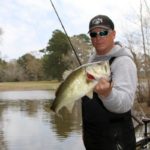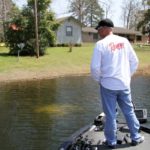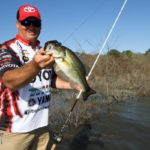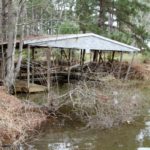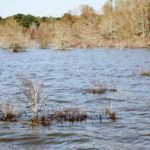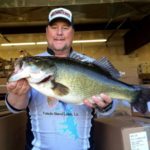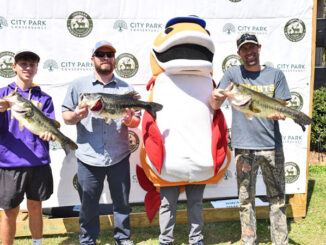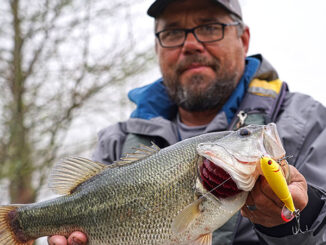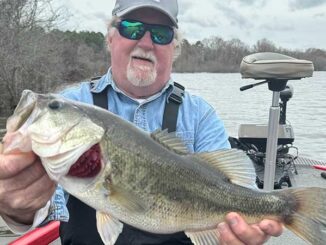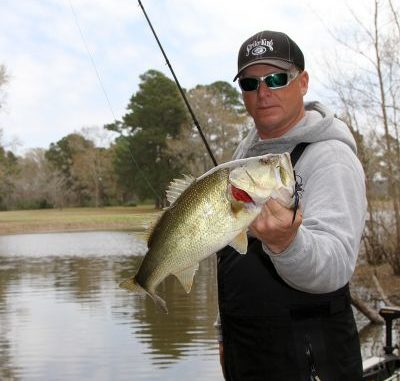
Toledo Bend has risen to celebrity by producing dozens of double-digit bass each year. And these experts tell you the best spots and exactly how to catch one of these beasts.
OK, a lot of the fame and celebrity we see in this world boils down to a whole lot of overblown self-promotion.
Not so for Toledo Bend.
This Sabine River impoundment shared with the Lone Star State is a straight-up rock star, being named the nation’s No. 1 bass fishery by Bassmaster Magazine.
You can’t get any more legit than that.
And there’s no better time to be part of the lake’s famed bass fishing than the season of largemouth reproduction.
“I think one of the biggest reasons I’d rank it highly is not necessarily because it’s that much better than any good lake during the spawn — but the spawn last so long there because there’s so many fish,” Bassmaster Elite pro Greg Hackney, who lives in Gonzales. “There are fish spawning there in February through May.
“It’s one of the few places in the country that has such a fish population that it takes four months to get through the spawn.”
But the lake stretches for more than 60 miles along the Louisiana/Texas border, so what how does an angler decide where to start?
Well, just about any creek, cove, pocket or flat could attract spawners, but there are definitely a handful of favorites. Everyone has their sweet spots, but we asked Hackney and Toledo Bend guide Darold Gleason for their input on some of the lake’s most productive spawn habitat.
Here are their suggestions.
Indian Creek
Location: Located on the lake’s southwest corner, this deep creek is known for housing some giants.
“It has a lot of fish in it, but it’s one of those places that’s known for those 10- to 12-pounders,” Hackney said.
What it offers: Proximity to the dam means deeper, clear water. There’s not a lot of wood, but plenty of hay grass, along with hydrilla and milfoil.
Most of the fish spawn over bare bottom on the inside edges between the hay and the bank.
“It’s typically a really good creek to sight-fish in because of the visibility,” Hackney said. “It’s also one of the first places to turn on because it’s one of the southernmost spots.
“Toledo is so big that the spawn starts at different times. The lower end of the lake could be a month before the upper end because of the length.”
How to fish it: Hackney likes covering water at a brisk pace with a black/blue 3/8-ounce Strike King Hack Attack Heavy Cover swim jig with a black/blue Strike King Rage Craw.
In bright conditions, he’ll go with a blue craw swim jig and a green pumpkin sapphire trailer to mimic bluegill.
“I’ll put my boat on the inside of the hay grass and just parallel the bank with that swim jig,” Hackney said. “I’ll pick some off that way, and I’m always visibly looking (for bedding fish).”
If the bass snub the moving bait, Hackney dead sticks a weightless watermelon/red Strike King Caffeine Shad on the inside edges of the grass.
With heavy fishing pressure and clear water, the fish can get spooky, and Hackney handles this by staying off the light spots and blind casting to the general area.
“I like that big 7-inch Caffeine Shad in Indian (color) because it’s one of the few places where I feel like I’m throwing it around something that could eat it,” he said.
Gleason also likes Indian Creek, along with Buck Creek that shares the same main-lake entry point.
This guide favors sight-fishing clear water amid the hay grass with a white craw, Beaver-like lure or creature bait.
If cloudy or windy conditions obscure his vision, Gleason switches to a light Carolina rig or wacky rig comprising a V&M Chop Stick rigged with an O-ring.
Housen Bay
Location: This popular arm on the Texas side boasts a big, grassy area known as the Ashmore Flats just west of Hurricane Creek, which branches off of Housen’s north bank.
And the river channel’s prominent westward swing helps keep this area vibrant.
What it offers: “It’s a series of flats with drains and ditches running through it, which offers perfect pre-spawn areas,” Gleason said. “Also, there are plenty of protected coves with fingers and arms and banks for them to get in and spawn.”
Gleason said that most years see significant hydrilla growth and, when lake levels permit, bass also utilize the abundant flooded cypress for spawning.
In recent years, the hay grass has become one of the prominent spawning habitats, Gleason noted.
“Housen is one of the main tournament and recreational fishing places on the lake,” Gleason said. “A lot of the double-digit fish are coming from Housen.
“Below the Pendleton Bridge, it’s one of the most-popular fishing areas on the entire lake for good reason — (it provides) tons of great fishing and tons of great cover for the fish to spawn in.”
How to fish it: If clarity allows, sight-fishing with a white V&M Wild Thang Craw is Gleason’s favorite deal here, but in windy conditions he’ll go to a weightless stick bait or a soft jerkbait.
His favorite windy-day go-to is a light Carolina rig with a ¼-ounce weight and a V&M lizard.
“On days where we can’t visually sight-fish for them, we fish the areas where we feel like they’re spawning, and we throw those light Carolina rigs in front of that hay grass or on the back side,” Gleason said. “We drag the rigs on the bottom really slow, and just try to get them in front of the fish and give them a chance to defend their territory.
Negreet Creek
Location: This is a mid-lake creek on the Louisiana side of the reservoir south of the Pendleton Bridge.
What it offers: Negreet has a lot of territory and a lot of hard targets, but water clarity isn’t as good as some other places.
“Typically, the water is a little dirtier than down on the lower end in Indian Creek, and the fish here have a tendency to spawn on boat docks, bushes or cypress trees,” Hackney said. “This makes it set up a little differently — the fish will be bedding on hard targets.
“It has marinas all around it and quite a few bushes, but cypress trees are the No. 1 deal there. It’s a place you can go in and flip cover.”
How to fish it: Early in the spawn, Hackney suggested running a spinnerbait or swimming a jig past cypress trees.
Negreet is also a good bet for flipping a jig or Texas-rigged soft plastics like a Strike King Rage Bug.
Hackney pointed out that the lake’s clear lower end is more of a long-cast deal, whereas Negreet epitomizes the lower visibility and target-rich environment of a flipping/pitching paradise.
Moreover, this is another hotspot that often sees strong early-season action.
And pickings are a little easier here.
“That’s one good thing about Negreet — it has a lot of bank cover, with the bushes and the cypress trees,” Hackney said. “It has a totally different look, and I think the fish are a little easier to catch in that part of the lake because of that off-colored water.
“I don’t think they’re as pressure-shy as they are in the lower end.”
1215
Location: Named for a highway that ran through the area before the impoundment flooded, this expansive main-lake flat north of Pendleton Bridge sits between San Patricio and San Miguel creeks.
What it offers: This huge area of shallow water is punctuated with numerous creeks and drains, and contains lots of bushes, willow trees on the main-lake edge.
“If the lake is low, it could be clear in the spring, but it’s typically pretty dirty,” Hackney said of the 1215 habitat. “It’s more of flipping deal, but it’s different from Negreet in that it’s a main-lake flat with a series of pockets; it’s not a big, long creek like Indian or Negreet, which both run way off the lake.
“Most of the fishing on 1215 (takes place) out on the main lake.”
With such sprawling habitat, 1215 boasts that enviable blend of quantity and quality.
“The 1215 has a huge population of fish,” Hackney said. “It has big ones, but it also has sheer numbers.
“Realistically, you couldn’t fish all of it in a week. It’s just a giant area.”
Hackney also pointed out an extended window of opportunity anglers often find in the 1215.
“It’s one of the areas of the lake that typically seems to stay on later,” the touring bass pro said. “That lower end will just die after the spawn; those fish spawn and then it’s over.
“But (in the 1215 area), the fish typically stay shallow a lot longer. The water stays dirtier, and it seems the fish just live shallower than they do on the lower end.”
How to fish it: Spinnerbaits, swim jigs, Texas-rigged Strike King Rodents and Rage Bugs and flipping jigs all produce, largely because they move water and grab attention in the lower visibility.
“I like a bigger profile — the dirtier the water, the bigger the profile, because you can get by with bigger stuff when the water’s dirtier and the fish can find it as easy,” Hackney said.
